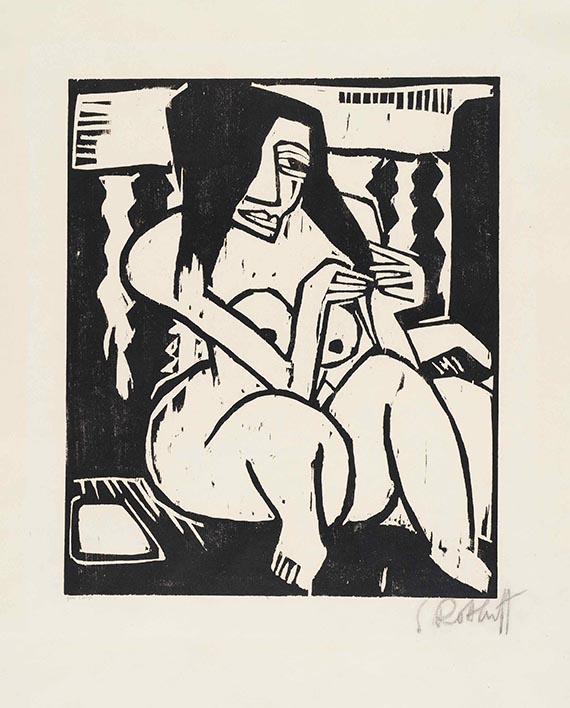Woodcut. Signed and with the signature of the printer Fritz Voigt. One of 100 copies.. On Perfecta laid paper (with watermark). 35.7 x 29.9 cm. Sheet: 57,3 x 43,4 cm.
Printed by Fritz Voigt, Berlin. Pubished by Hyperion (later Euphorion Verlag), München. [MH].
• For the “Brücke” artists, woodcuts played a crucial role as a means of graphic expression.
• This expressive woodcut was created in the year the “Brücke” group disbanded.
• Other copies of this woodcut are in the collections of the Städel Museum in Frankfurt, the Brücke Museum in Berlin and the Museum Ludwig in Cologne.
LITERATURE: Rosa Schapire, Karl Schmidt-Rottluff. Graphisches Werk bis 1923, Berlin 1924, catalogue raisonné no. H 123 (illustrated, plate volume). -- Gerhard Wietek, Schmidt-Rottluff. Graphik, Munich 1971, no. 72 (illustrated).



